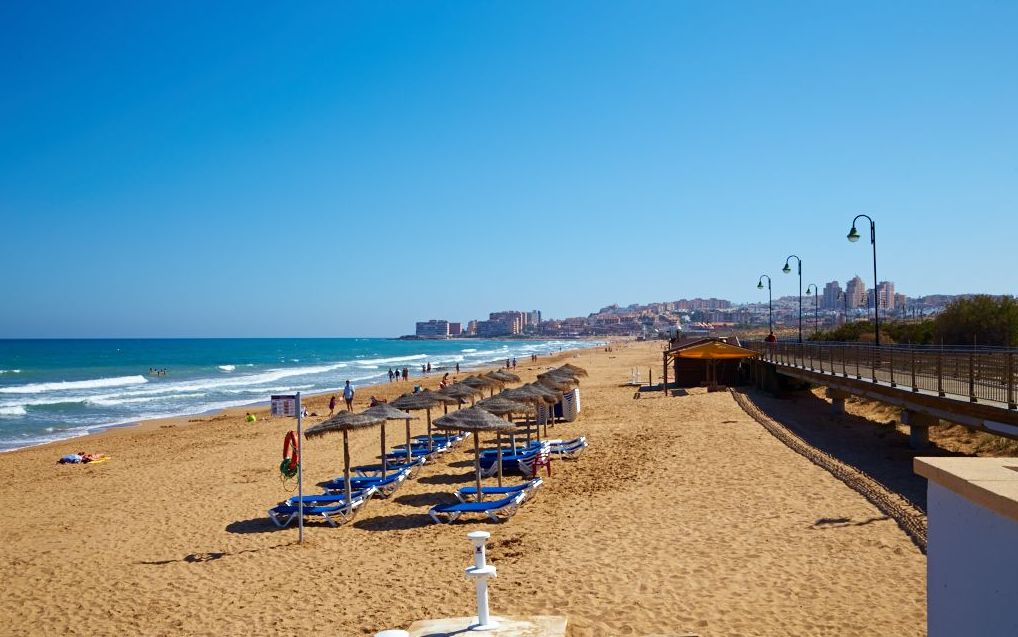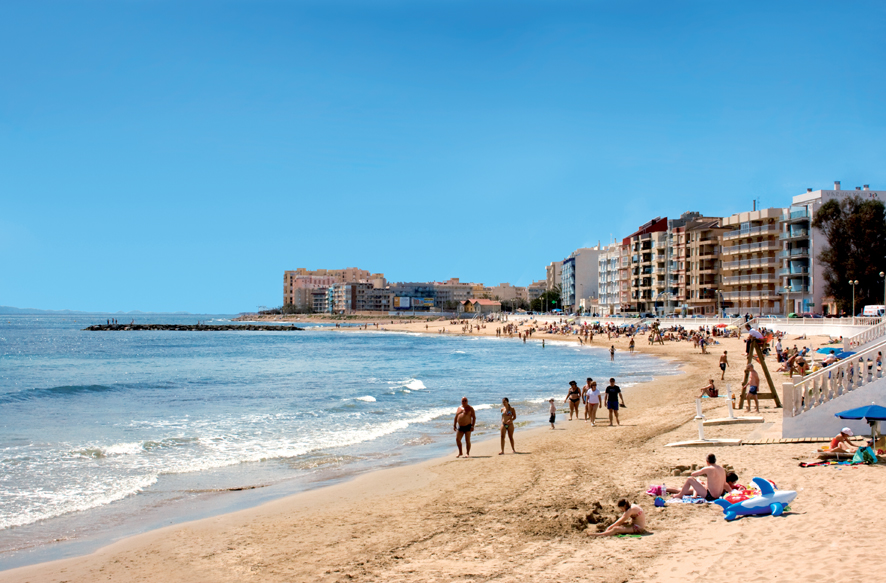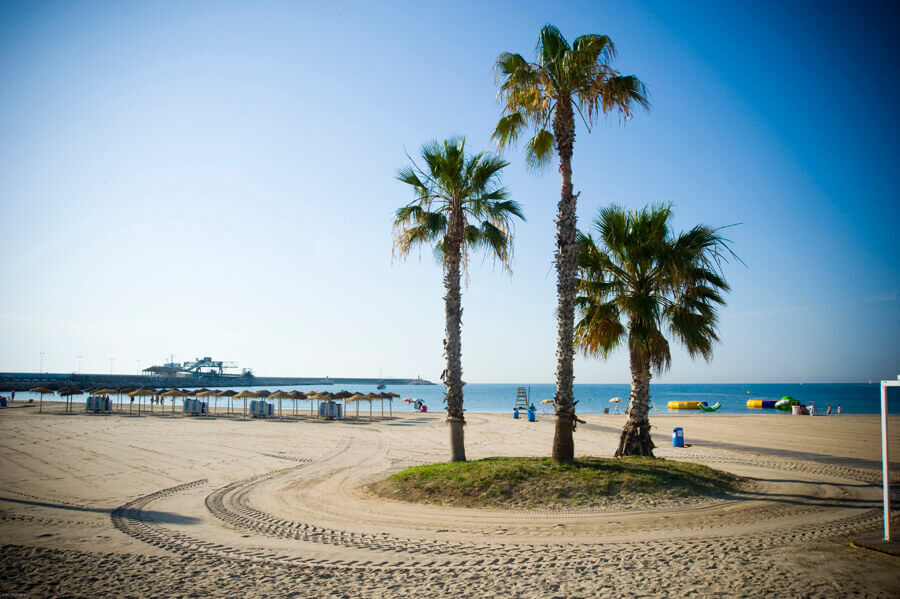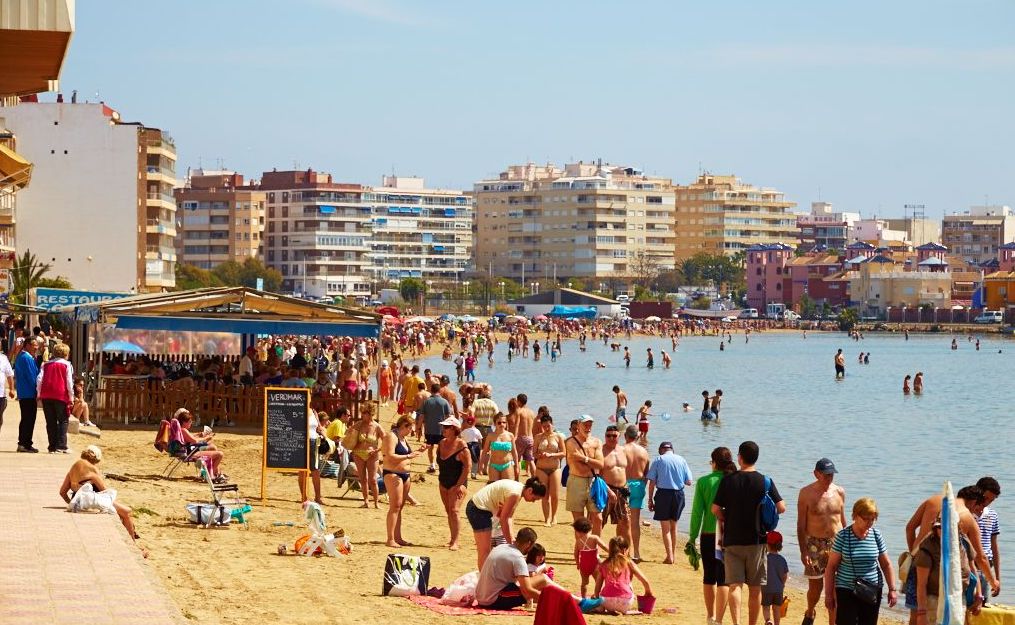Summer is just days away, and Spain plans to reopen its borders to tourists from all over the world after 7 June! Against this backdrop, the most important thing that travelers and homeowners on the Mediterranean coast are concerned about is, of course, the sea!
A sought-after tourist destination and a favourite among the Russian-speaking population, Torrevieja is looking forward to the start of the tourist season, and the gentle sea on its shores is getting warmer by the day… Want to know more about the sea? Let’s start with the main thing.
Torrevieja – what sea is here?
Torrevieja is located in the Costa Blanca, Spain and is bathed by the waves of the Mediterranean Sea.

Here are some curious facts about this sea:
- The Mediterranean is one of the most popular holiday destinations in the world. About a third of all foreign tourists choose to spend their holidays here.
- The Black Sea is well known to western Europeans and, in a sense, it is the ‘offspring’ of the Mediterranean Sea. Thousands of years ago, due to tectonic movements in the earth’s crust, the landmass between the two seas receded and the waters of the
Mediterranean Sea flooded the valley with a strong current; hence one sea begat the other!
- The famous resorts of the Adriatic and Ionian Seas are, in fact, also Mediterranean resorts, as they are part of the 11 seas of which the Mediterranean Sea is composed.
- Do you think the White Sea is an inland sea in the north of European Russia that belongs to the Arctic Ocean? You’d probably be right, but… from your point of view. But in Turkey, the Mediterranean Sea is also sometimes referred to as the “White Sea” because they associate that colour with the west, where it is located relative to Turkish shores.
- The Mediterranean Sea washes the shores of 22 countries!
- Switzerland sets its sea level in relation to the Mediterranean Sea, while Germany sets its sea level in relation to the North Sea, and the difference is 27 cm. When the two countries once agreed to build a bridge over the river that separates them, construction started on both sides, but about halfway through, it turned out that the German side was higher than the Swiss side and had to be lowered.
The Mediterranean coastline is about 46,000 km long, roughly twice as long as the coastline of Africa and even longer than the equator! - As navigation developed thousands of years ago, there are countless shipwrecks at the bottom of the Mediterranean today. Their exact number is impossible to ascertain, but scientists believe that we are talking about tens, maybe even hundreds of thousands of ships!
Sea in Torrevieja – what is the water temperature?

Like many other cities on the Costa Blanca, the bathing season in Torrevieja starts around mid-May and ends at the end of October.
Let’s take a quick look at the sea temperature by month:
- December: +18.6 °C (max), +15.1 °C (min), +16.6 °C (average).
- January: +17 °C (max), +12.9 °C (min), +15 °C (average).
- February: +15.7 °C (max), +13.6 °C (min), +14.3 °C (average).
- March: +16.1 °C (max), +12.9 °C (min), +14.6 °C (average).
- April: +17.7 °C (max), +14.1 °C (min), +16.0 °C (average).
- May: +21.5 °C (max), +15.9 °C (min), +18.8 °C (average).
- June: +25.9 °C (max), +18.5 °C (min), +22.4 °C (average).
- July: +28.2 °C (max), +22.4 °C (min), +25.6 °C (average).
- August: +28.2 °C (max), +25.5 °C (min), +26.8 °C (average).
- September: +27.7 °C (max), +22.6 °C (min), +25.6 °C (average).
- October: +25.6 °C (max), +19.6 °C (min), +22.9 °C (average).
- November: +22.2 °C (max), +16.7 °C (min), +19.4 °C (average).
Thus, it is possible to swim in the Mediterranean Sea for almost half a year. The rest of the year, when the water is not so warm, the beaches of Torrevieja are still full of people walking, sunbathing and exercising because the temperatures on the Mediterranean coast are comfortable all year round!
Sea in Torrevieja – what beaches are here?
There are several different types of beach in Torrevieja: sandy and pebbly, urban and wild, noisy and secluded. There are also special beaches suitable for nudists, for swimming with small children or for walking with dogs, so the sea in Torrevieja is sure to please everyone!
It is worth noting that the public beaches in the city are free of charge and are very well maintained and equipped.
Among those located directly in the city are:
- Playa de la Mata is the largest beach and considered the best in Torrevieja.
- Playa del Cura is the most popular and is located in the centre of the city; therefore, it is the most crowded during the season.
- Playa de Los Locos – Gentle access, ideal for swimming with children.
- Playa Canina Punta Margalla (dog-friendly beach) – located between Del Cura and Los Locos beaches, dog walking is allowed here.
- Playa de los Naufragos – Quiet beach near the Torrevieja Pink Lake.
- Playa del Acequión is a beach near the seaport of Torrevieja, in the marina.
Previously, we’ve talked in detail about the different beaches of Torrevieja and the surrounding area, so today, we suggest just learning something interesting about the history of their appearance and names.
Here we go!
The sea in Torrevieja – La Mata beach

The beach got its name from the Mediterranean bush called “mata”. This was the name of the village on the site of today’s La Mata beach.
These shrubs reached several metres in height, grew successfully on salt marshes and, according to the research of biologist Juan Antonio Pujol, were used by the locals in the construction of houses and for domestic purposes.
The sea in Torrevieja – Del Cura beach

In the official annals of Torrevieja, the area has been listed on nautical charts since at least 1870. There are few historical references to the origin of the beach’s name, but there is an urban legend, albeit a sad one.
According to it, a priest once went for a swim in the sea here but did not return. Locals suggested he might have drowned.
At the time, Torrevieja was not a town, but a small village where the priest’s identity carried a lot of weight. The grieving inhabitants gave the place the name ‘Del Cura’, from el cura (the priest).
The sea in Torrevieja – Los Locos beach

At the beginning of the twentieth century, a home for the mentally ill was built on the coast, and Dr. Ruiz Cánovas, the attending physician, pioneered the treatment of this type of illness.
Political correctness wasn’t yet common in those days, so locals nicknamed the place simply “playa los locos”, meaning “beach of the insane”. However, the beach’s popularity didn’t suffer from this.
The Sea in Torrevieja – Punta Margaya dog-friendly beach
Here you’ll find an entire 400-metre stretch of rocky beach where pets are allowed to walk.
The beach is quite shallow by the shore, so dogs have plenty of room to frolic, while owners can enjoy a leisurely stroll in the fresh air and peaceful views of the coves and rocky shores around them.
The Sea in Torrevieja – Los Naufragos Beach

Literally, the name translates as ‘shipwrecked beach’. This sad name takes us back to the days when there were no dams or harbours on the coast.
Due to heavy storms from the east, fishing boats were often wrecked. The boats ran aground and the wreckage washed ashore. Unfortunately, the situation was rather mundane at the time and so there was a whole industry for recycling shipwrecks on land. Could the beach have been called otherwise?
The sea in Torrevieja – Del Acequion beach

The history of the area goes back more than five hundred years, but legally Acequion is not a beach at all, as it is located in the port area. But the residents call it a beach because thousands of bathers in the summer choose Acequion for their holiday, thanks to its central location and the absence of high waves.
The beach is located inside the bay and gets its name from the kilometre-long ditch (acequión “ditch”) that connects the Mediterranean Sea to Torrevieja’s lagoon and is used for salt extraction. It is the only structure in the city with more than five centuries of history.
We hope that today you have learned a little more about what stories the Torrevieja coastal area holds and its Mediterranean Sea, in turn, is waiting for visitors and hopes to meet them soon!
If you are planning a holiday in Torrevieja and are looking for short-term rentals, take a look through our catalogue where you will find plenty of properties to rent in Spain.



